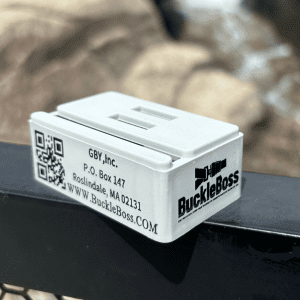Caring for a loved one is a journey filled with love, sacrifice, and profound dedication. As family caregivers, you give so much of yourselves to ensure the safety and well-being of those you care for. It’s important, though, to remember that taking care of your own well-being is just as crucial. Nurturing yourself helps you continue to be the rock your loved one relies on, enhancing life for both of you. To support you in this vital role, imagine having a “caregiver toolkit” tailored just for you. This toolkit is packed with essential tools for caregivers, designed to make your caregiving tasks easier and less stressful. In our guide to the Top 5 Essential Tools for Family Caregivers, we’ll introduce you to resources that can simplify your daily routine, lighten your load, and bring a bit more joy and ease into your caregiving journey.
Top 5 Essential Tools for Family Caregivers
Family caregiving is a path of endless devotion and caring, where every tool that can make the journey smoother is a treasure. Here are five essential tools that can transform the caregiving experience, making it easier and more fulfilling for both you and your loved one.
1. Seat Belt Guards:
One common challenge is ensuring that these children remain safely buckled in their car seats, especially if they have a tendency to unbuckle themselves. This can be a significant concern, as it affects their safety during travel.
Seat belt guards like the Buckle Boss provide a simple yet effective solution. These devices cover the buckle of the seat belt, preventing children from pressing the release button. For caregivers, this means less worry about the safety of their children during drives and fewer distractions while navigating the roads. ‘
2. Electronic Medication Reminders:
Managing medications is a critical task in caregiving, especially when dealing with multiple prescriptions. Electronic medication reminders are tools that can help ensure that medications are taken correctly and on time. These devices can alert caregivers and their loved ones when it’s time to take their pills, reducing the risk of missed or double doses.
3. Mobile Health Apps:
Today, many mobile apps are available to help caregivers monitor health metrics, schedule appointments, and track medical conditions. These apps can store medical history, remind you of doctor’s appointments, and even help you understand various health conditions, making them an invaluable resource in managing care more effectively.
4. Portable Ramps:
For caregivers of individuals who use wheelchairs or mobility scooters, portable ramps are essential. They facilitate access to homes, vehicles, and public places, significantly easing the physical strain on both the caregiver and the individual by enhancing mobility and independence.
5. Voice-Activated Home Assistants:
Devices like Google Home or Amazon Echo can be used to control lights set reminders, make phone calls, or play music using voice commands. These assistants can help reduce the workload on caregivers by performing tasks that otherwise require physical effort or time, allowing them to focus more on direct care and interaction with their loved ones.
Each of these tools offers specific benefits that can help ease the challenges faced by family caregivers. From ensuring safety with seat belt guards to enhancing daily convenience with smart home technologies, integrating these tools into your caregiving routine can make a significant difference.
Other Essential Caregiver Tools
Caring for a loved one is a role filled with both challenges and immense rewards, and having the right tools can make all the difference. Here are four essential tools that every caregiver might consider integrating into their routine to enhance their efficiency and effectiveness:
- Portable Changing Pad: Offers a safe, clean surface for personal care anywhere, enhancing comfort and dignity during outings.
- Medication Organizer: Simplifies medication management, ensuring timely and accurate dosage with less stress.
- Communication Apps: Facilitates better interaction for those with communication challenges, enhancing their ability to express needs.
- Lightweight Wheelchair/Mobility Scooter: Increases mobility for individuals with limited movement, promoting independence and access to outdoor activities.
Deep Dive into Seat Belt Guards: A Caregiver’s Guide
As caregivers, ensuring the safety of our loved ones, especially those with special needs, is a top priority. Seat belt guards are an invaluable tool in this endeavour, providing an extra layer of security for children who might otherwise unbuckle their seat belts during a journey. Understanding how to choose and use a seat belt guard can make all the difference in ensuring safe and stress-free travels.
Choosing the Right Seat Belt Guard:
Selecting the right seat belt guard involves considering several factors, including the child’s age, the type of disability they have, and the compatibility with the car seat. For younger children or those with minimal dexterity issues, a simple cover-type guard that makes it difficult to press the release button may suffice. For children with more significant motor skills or behavioural challenges, a more robust design, possibly one with a key or combination lock, might be necessary. It’s also crucial to ensure that the guard fits snugly with your specific car seat model to avoid any unintended release.
Effective Usage Tips:
- Proper Installation: Follow the manufacturer’s instructions meticulously to ensure that the seat belt guard is installed correctly. This not only secures the device but also ensures it functions as intended without causing discomfort to the child.
- Introducing the Guard Positively: When introducing a new seat belt guard, frame it as a part of the child’s routine that keeps them safe and secure. Explain its importance in simple terms, likening it to wearing a helmet while biking, which protects them.
- Practice Makes Perfect: Before heading out, spend time practicing with the seat belt guard. Allow your child to interact with it while explaining its purpose. This familiarization can help mitigate any anxiety or resistance and make the actual usage during trips smoother.
Addressing Concerns and Supervision:
Supervision is essential, not only to monitor for distress or discomfort but also to reinforce the use of the guard as a normal part of car travel. Just as we use seat belts consistently to protect ourselves, the seat belt guard is a tool for their safety, and consistent use helps it become a natural part of their routine.
Seat belt guards, when chosen and used correctly, can significantly enhance travel safety for children with special needs, giving caregivers peace of mind. Like any safety device, its effectiveness comes from proper use, consistent practice, and regular supervision. By integrating these into your caregiving toolkit, you ensure that every journey is as safe as it can be, allowing you and your loved one to enjoy the ride with fewer worries.
Conclusion
Equipping yourself with the right tools as a caregiver can transform both your experience and the level of care you provide. Among these essential tools, seat belt guards stand out as crucial for ensuring the safety of children with special needs during travel. We encourage you to explore not only seat belt guards but also the other valuable tools discussed in our guide, which are designed to support you in your caregiving journey.
For more detailed information, including installation guides and inspiring success stories from other caregivers, be sure to visit the Buckle Boss website.
There, you’ll find a wealth of resources to help you make informed decisions and ensure your loved one’s safety. We invite you to browse through the various seat belt guard options and learn more about car seat safety tips tailored for children with disabilities.
Take this step towards a more secure and stress-free caregiving experience.



